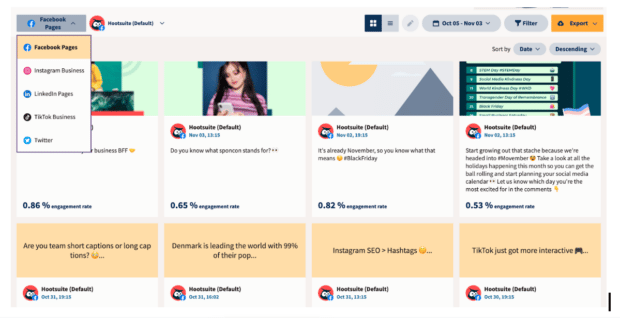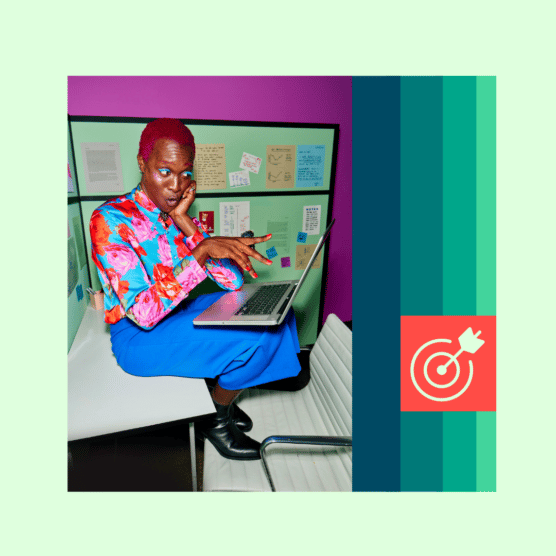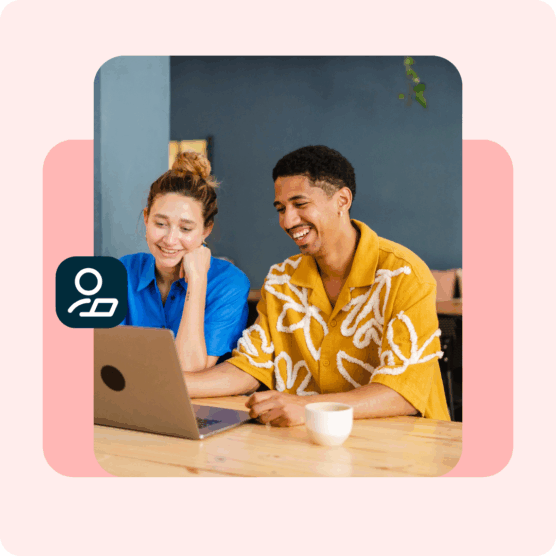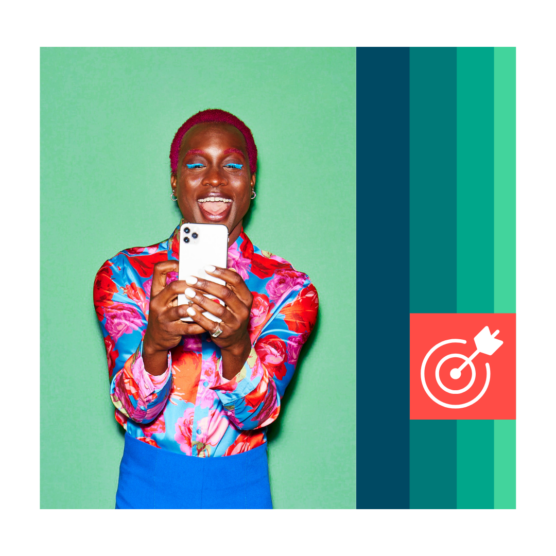If it seems like every brand is working with influencers these days, you’re not imagining it — they are. Over 72% of U.S. marketers leveraged influencer marketing in 2022, and this number only continues to grow. In fact, the influencer market is valued at over 16 billion U.S. dollars, and most of that money goes to sponsored posts (aka sponcon).
Why are brands spending their marketing dollars in this way? Because influencer marketing works. 61% of consumers trust recommendations on social platforms, including those made by influencers.
If all these stats have convinced you, read on — we’ve got everything you need to get started with sponsored posts.
What is a sponsored post?
A sponsored post is any social media post you’ve paid to promote. When you create a sponsored post, you’re spending money to help it reach a wider audience.
You can find sponsored posts on every social media platform, including Instagram, TikTok, Facebook, and even LinkedIn.
There are two types of sponsored posts:
1. Promoted/boosted posts
This is the traditional style of paid advertisement. Brands pay to publish native ads on a social platform like Instagram or Facebook. Paid ads use data like location, age, or gender to target specific audiences. Your ad money goes directly to the social media platform.
Boosted posts are easy to spot because they have the word “sponsored” or “promoted” underneath the account username. Paid posts often feature a call-to-action button to drive results, such as “Shop Now” or “Download.”
Here are examples of sponsored posts on different platforms:
Instagram sponsored post

Source:@crateandbarrel
Facebook sponsored post

Source: @AmericanTallClothing
LinkedIn sponsored post

Source: @StreetLight
2. Influencer partnerships
In this type of sponsored post, advertisers pay a specific user, usually an influencer, to promote their brand in a post. These influencers offer access to their audience of engaged followers.
An influencer’s opinions and endorsements carry weight with their followers, so these posts are a great way to generate social proof. Your brand can work with influencers to access a powerful source of “word-of-mouth”-style marketing.
An influencer ad can be tricky to spot because it usually looks like their regular content. To help with transparency, most social media platforms make it mandatory for influencers to label their paid posts.
Here are examples of influencer partnerships on different platforms:
Instagram influencer ad

Source: @angelarosehome
Facebook influencer ad

Source: @theteairawalker
LinkedIn influencer ad

Source: @thatalliemason
Why should brands do sponsored posts?
Sponsored posts have a wide reach — and an even bigger impact on your bottom line.
According to a 2022 Oracle survey, 84% of Gen Z consumers have purchased products in direct response to social media content. Even better, almost 30% of respondents say that they discover new products and brands through influencers.
But that’s not all. Here are five more reasons why your brand should invest in sponsored posts:
You can create an emotional connection
Consumers want to know how your product can help them live a fuller life. An influencer can use their strong emotional connection with their audience to show off the benefits of your product.
Look at these two posts. Most social media users would scroll right past a regular static feed ad from these brands. These influencers’ posts turn run-of-the-mill products into life-changing items you need to have:
https://www.instagram.com/reel/CfoipEXqIZo/?utm_source=ig_web_copy_link
https://www.instagram.com/p/ClWXAH5LOs_/?utm_source=ig_web_copy_link
You can reach a new audience
When selecting an influencer to partner with, make sure that they’re a natural fit for your brand. If the partnership seems forced, your audience will notice.
But there’s also a benefit to working with influencers who aren’t necessarily an obvious fit. These influencers can help you reach people who wouldn’t see your ads otherwise and create awareness with a new audience.

Source: @thesorrygirls
You can drive higher engagement
A promoted post might get you views, but views don’t necessarily translate to engagement. People tend to scroll right past content that looks like an ad, leading to a low engagement rate.
A sponsored post that looks more like organic content helps you grab and keep someone’s attention. Leverage the trust that an influencer has built with their audience to keep eyes on your content.
You can show off your product
Influencers can create video content that demonstrates how your product looks or works. Unboxing and “get ready with me” videos are popular for a reason — they’re like old-school infomercials, reimagined for a new generation.
These videos look and feel like user-generated content, but they are created specifically to show off a product or brand. This content helps new customers picture themselves using your products.
https://www.instagram.com/reel/ClWSYciDX0J/?utm_source=ig_web_copy_link
You can create buzz
Ready for more stats? 77% of consumers say that social media helps them discover new brands they haven’t heard of before.
Giving an influencer early access to new products can boost the success of your campaign. When they share a sneak peek at an upcoming release, they generate anticipation and FOMO.
Make sure to use tracking methods to see if the buzz translates to sales (more on this later).
Why should creators do sponsored posts?
Brand partnerships allow content creators to make a living online. You can grow your brand and expand your creative pursuits with sponsorship income.
As a creator, here are a few reasons why you should incorporate sponsored posts into your business model:
Get paid to create the content you already make
You’re probably mentioning brands in your posts already, even if they’re not paying for it.
Just look at this Instagram Reel by @thekwendyhome, which is unbelievably NOT sponsored by a vacuum brand:
https://www.instagram.com/reel/ClOxmPNpscV/?utm_source=ig_web_copy_link
With sponsored posts, you get paid to create content that shines a spotlight on the brands you love.
Work with brands that fit with your content and voice, so you can incorporate paid posts without alienating your audience.
For more on this, check out our guide to making money on social media.
Establish yourself as a leader in your niche
According to the 2022 Hootsuite Digital Report, less than 20% of working-age internet users feel represented in advertising. This presents a fantastic opportunity for creators to develop their niche and build a dedicated following that sees themselves reflected in the content.
Osob Mohamud is a Muslim beauty influencer who partners with national brands like Estée Lauder and Reitmans. These brands may not reach Mohamud’s audience through traditional advertising means, but they can connect with a new customer base by partnering with her to create content.
https://www.instagram.com/reel/Cgw1Y8rAIcU/?utm_source=ig_web_copy_link
Receive #gifted products that help grow your business
Whether you’re a DIYer completing projects with your preferred tool brand or a makeup influencer showing off your favorite lip product, gifted products can help you achieve your business goals.
Gifted products make it easy to create your content without spending money, so you can allocate resources towards creating more content and expanding your reach.
Home decor influencer Macenna Lee is currently renovating her home inside and out. Many of her paid posts highlight products that are helping with this renovation:
https://www.instagram.com/p/Cghfh9HL-zh/?utm_source=ig_web_copy_link
How to get started with sponsored posts
As a brand
Customers tend to notice if your influencer partnerships seem forced. Finding the right partner is key, so start by doing your research.
Make a list of influencers whose audience and tone dovetail with your business goals.
Next, check out what type of sponsored content they’re posting. How frequently do they have paid posts? Are their paid posts getting likes and positive comments? Do their followers seem interested and engaged in this content?
After you’ve established a partnership with the right influencer, focus on collaborating with them to develop content. They know their audience best, so don’t try to dictate every single aspect of the campaign. Work with your influencer to create content that will help you reach your goals while remaining true to their existing brand.
For more tips on collaborating with influencers, check out our guide to influencer marketing.
As a creator
If you think that you need a million followers to land a brand deal, think again! Influencers come in all shapes and sizes, with nano influencers on the rise.
A nano influencer is anyone on social media with less than 10,000 followers. Their smaller audiences are usually very engaged, which is incredibly valuable to brands.
If you’re a creator with a smaller audience, start by posting authentic and engaging content. Consistency is key when building your audience.
Once you’ve got an active audience and great content, work on perfecting the art of the brand pitch. Other influencers are vying for the same sponsorship dollars, so make sure you articulate what sets you apart.
How to measure the success of your sponsored post
It’s tempting to rely on likes and comments to measure success, but these vanity metrics only tell part of the story.
Here are a few techniques you can use to track the effectiveness of your campaign:
Use UTM parameters
UTM parameters are short pieces of tracking code that you can add to links you share anywhere — like in a social media post, for example. They make it easy to tag your content and keep an eye on the ROI of your sponsored posts.
You may want to create individual campaigns for each influencer partner. You can also try nesting their efforts under the same campaign and differentiate their content using the content tag. Whatever you decide, make sure you keep track of it!
You can use Hootsuite Composer to generate UTM links with ease. Ow.ly, Hootsuite’s built-in link shortener, even lets you reduce the character count of those long UTM-tagged URLs.
Create specific discount codes
Create unique discount codes for each influencer partner to see how their sponsored posts are driving sales. After the campaign ends, review your sales reports to see how often shoppers used the code and what they bought.
Use each platform’s native tools
Each social media platform’s business management tool allows you to view post and account analytics. Facebook and Instagram share the Meta Business Suite, while TikTok has the Business Center. These platforms already centralize your marketing and advertising activities, so use them!
Ask the influencer for reports
Influencers can use their business dashboards to see the reach and engagement levels of their posts. Make sure to ask them for regular, detailed reports so you can track how a campaign is performing.
Gauging success as a creator
As a creator, you’ll need to be able to back up your initial pitch with numbers that prove you’re a worthwhile investment.
To get this info, make sure that you’re using a business account on all your social media platforms. (And, of course, we recommend connecting those accounts to your own Hootsuite dashboard.)

Once your content is live, you can use your Hootsuite account to pull data like the engagement rate for each sponsored post.
Brands will ask for these numbers, so learn how to interpret data and create reports. Put a sample report in your pitch deck to show that you’re good at this!
Make influencer marketing easier with Hootsuite. Schedule posts, research and engage with influencers in your industry, and measure the success of your campaigns. Try it free today.






